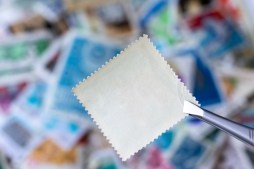Exploring Different Fabric Painting Techniques: A Comprehensive Guide
Fabric painting is a versatile and creative way to add your personal touch to garments, home decor items, and accessories. Whether you’re a seasoned artist or a beginner looking to explore your artistic side, fabric painting offers endless possibilities. In this comprehensive guide, we will take you through different fabric painting techniques that will help you create stunning designs on various types of fabrics.
Block Printing Technique
Block printing is one of the oldest forms of fabric painting techniques. It involves creating patterns using wooden blocks carved with intricate designs. This technique allows for precise and repeated patterns on fabric.

To get started with block printing, gather your materials – fabric paint, wooden blocks, a foam brush or roller, and a palette for mixing colors. Before you begin, wash and dry your fabric to remove any sizing or starch that may hinder the paint’s adhesion.
Next, apply an even layer of fabric paint onto the wooden block using the foam brush or roller. Make sure the entire surface of the block is covered with paint. Press the painted block firmly onto the fabric, applying even pressure throughout.
Repeat this process to create a pattern across your desired area. Experiment with different blocks and colors to create unique designs on your fabric.
Stencil Technique
The stencil technique is perfect for beginners who want to achieve precise shapes and designs without freehand painting skills. Stencils are pre-cut templates made from plastic or cardboard that can be easily placed on fabric for painting.
Start by choosing a stencil design that appeals to you – it could be anything from flowers and animals to geometric shapes or letters. Secure the stencil onto your fabric using tape or adhesive spray so it doesn’t move while you paint.
Once your stencil is in place, use either a foam brush or a sponge dauber to apply paint over the cut-out areas of the stencil. Make sure not to overload the brush or sponge with paint to avoid smudging.
Gently remove the stencil while the paint is still wet to reveal your design. If you want to add more depth and dimension, wait for the first layer of paint to dry completely before applying another color or shading with a brush.
Freehand Technique
For those who are confident in their painting skills, the freehand technique allows for complete creative freedom. With this technique, you can create intricate designs, blend colors seamlessly, and add personalized details to your fabric.
To get started with freehand fabric painting, gather your materials – fabric paint, brushes of various sizes, a palette for mixing colors, and a pencil or chalk for sketching your design.
Before applying any paint, sketch your design lightly on the fabric using a pencil or chalk. This will serve as a guideline for your painting. Start by applying base colors using larger brushes, gradually adding details with smaller brushes as you go along.
Experiment with different brush strokes and techniques like blending colors together or adding texture using sponges or stencils. Remember that practice makes perfect when it comes to freehand painting – don’t be discouraged if it takes a few tries to achieve the desired result.
Tie-Dye Technique
Tie-dye is a fun and vibrant fabric painting technique that creates unique patterns through folding, twisting, and tying fabric before applying dye. This technique is commonly used on t-shirts and other garments but can be applied to various fabrics.
To start tie-dyeing your fabric, gather your materials – fabric dye in different colors, rubber bands or strings for tying, plastic squeeze bottles or spray bottles for application, gloves to protect your hands from staining.
Begin by folding or twisting your fabric into desired shapes – swirls, stripes, bullseye patterns are all popular choices. Secure the folded fabric tightly using rubber bands or strings at regular intervals.
Prepare your fabric dye according to the instructions on the package. Fill squeeze bottles or spray bottles with the prepared dye.
Apply the dye onto the fabric, making sure to saturate all the folds and creases thoroughly. Use different colors and techniques to create a vibrant and eye-catching design.
Once you’ve applied the dye, let it sit for the recommended time specified by the manufacturer. Rinse out excess dye using cold water until the water runs clear. Remove rubber bands or strings and hang your fabric to dry.
In conclusion, fabric painting techniques offer endless possibilities for creating unique and personalized designs on various types of fabrics. Whether you prefer block printing for precision, stencils for simplicity, freehand painting for creativity, or tie-dyeing for a fun and vibrant look, there is a technique that suits your style. So gather your materials, unleash your creativity, and start exploring the world of fabric painting today.
This text was generated using a large language model, and select text has been reviewed and moderated for purposes such as readability.


